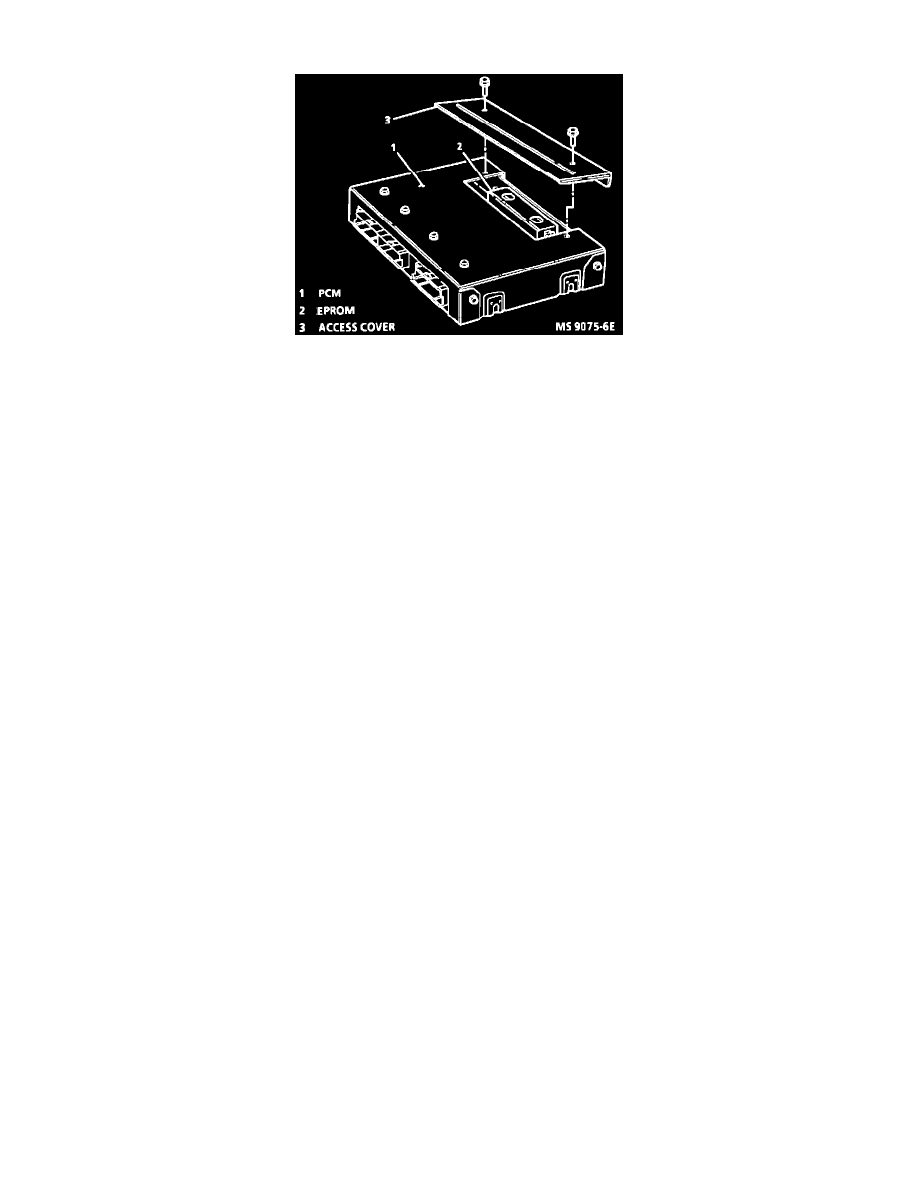Bonneville V6-3800 3.8L Supercharged (1992)

Engine Control Module: Description and Operation
Powertrain Control Module (PCM)
COMPUTER INPUTS/OUTPUTS
The "Control Module" (referred to as the PCM - Powertrain Control Module) is located in the passenger compartment and is the control center of the
Computer Command Control (C3) system. The PCM constantly monitors various sensors, compares this information with programmed information
stored in its memory, and operates output devices to control fuel delivery, idle speed, ignition timing, and certain emission control systems. The
following is a list of some of the systems controlled by the PCM.
^
Fuel Delivery (pump) and Fuel Injection System
^
Ignition / Electronic Spark Timing (EST)
^
Electronic Spark Control (ESC - knock sensor)
^
Supercharger Boost Pressure
^
Air Conditioning Compressor Clutch
^
Coolant Fan
^
Idle Speed Control
^
Evaporative Emission Control System (purge control)
^
Torque Converter Clutch. (TCC)
^
Electronically Controlled Automatic Transmission (shift control)
The computer controls output devices through Quad Driver Modules (QDM). Most output devices are operated by completing the circuit to ground.
When the PCM is commanding a device or a component "ON," the quad driver for that device completes that circuit to ground. When the PCM is
commanding a device or component "OFF," the quad driver opens the ground circuit. Inputs may be related to more than one output. If an input device
fails, such as the oxygen sensor, this could affect more than one of the systems controlled by the computer.
The PCM has several serviceable parts. A controller, called a PCM, and one of the following combinations of programming memory; a PROM
(Programmable Read-Only Memory), a PROM and a CAL-PAK (Calibration Package), or a MEM-CAL (Memory Calibration unit), which also contains
the fail-safe programming to operate the vehicle if the PCM or other vital system fails.
SELF DIAGNOSTIC FUNCTION
The computer can recognize problems with sensors, output devices and circuits, and alert the driver by turning on the "SERVICE ENGINE SOON" light
on the instrument panel. Problems in specific devices or circuits are identified by "trouble codes", which are stored in the computers memory when a
problem is detected in a computer controlled device or circuit. Trouble codes can be read using a "SCAN" tool or by entering the PCM into diagnostic
mode and counting the flashes of the SES light. See DIAGNOSIS, TESTING AND INSPECTION PROCEDURES/TESTING
PROCEDURES/ON-BOARD DIAGNOSTICS for display procedures and trouble code descriptions.
ADAPTABILITY
The system has a learning ability which allows it to make corrections for minor variations in the fuel system to improve driveability. The computer stores
actual sensor signal values in its memory during normal operation and uses them as the "default" values when the engine is started again. This ensures
good performance and driveability each time the vehicle is driven, even if conditions are changing. If the battery is disconnected, memory is lost and the
learning process has to begin all over again. When this happens, a change may be noticed in the driving performance. Normal operation at part throttle,
moderate acceleration, and idle conditions, should restore good performance after a short time.
FAIL-SAFE OPERATION
